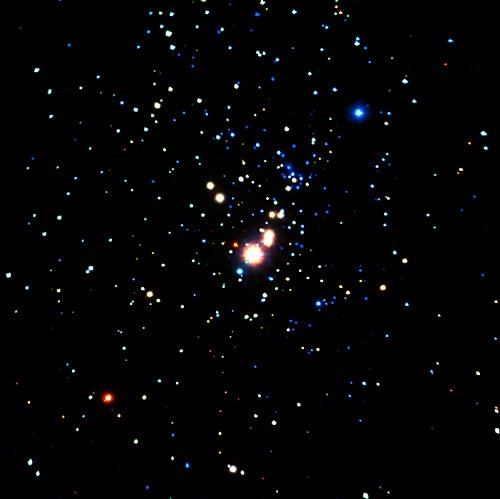Powerful X-ray flares from young, Sun-like stars may help newborn rocky planets survive their births, says a team of astronomers using the Chandra X-ray Observatory.
The research team is making the observations, part of the ongoing Chandra Orion Ultradeep Project, as a way to observe the early Sun. “We used the Orion Nebula Cluster as a virtual time machine to view the Sun as it was about 4.5 billion years ago,” says Scott Wolk of the Harvard Smithsonian Center for Astrophysics, one of the team. In Orion, he says, “We’re seeing stars only 1 to 10 million years old, a time when planets form.”
A good thrashing
Scientists think the super-flares, which Chandra found occur about once a week per star, will greatly affect any protoplanetary disk surrounding the star. Previous work with the Hubble Space Telescope and other instruments has revealed over half the young stars in the Orion Nebula have disks that are likely the sites of planet formation.
Gigantic flares would generate turbulence within a disk as the outburst’s ionized material swept through the magnetic fields in the disk. This turbulence, says Joan Najita of the National Optical Astronomy Observatories, jostles growing rocky planets and helps keep them out of trouble.
“In non-turbulent disks,” says Najita, “rocky cores will rapidly spiral into the star,” thanks to the disk’s drag. But in a turbulent disk, she explains, “planetary cores can scatter off the fluctuations like small boats tossed about by waves in a storm.” As a result, the cores’ steady drift inward toward the star is delayed, giving more time for the dusty disk to blow away. If that happens, the rocky cores are more likely to survive and become terrestrial planets.
Team member Eric Feigelson of Penn State University agrees, noting the irony. “Big X-ray flares” he says, “could lead to planetary systems like ours, with an Earth at a safe distance from the Sun.” While such flares today would cause great problems for life on Earth, in a still-forming planetary system their role could be helpful.
Says Feigelson, “The flares may be acting like a planetary protection program.”










